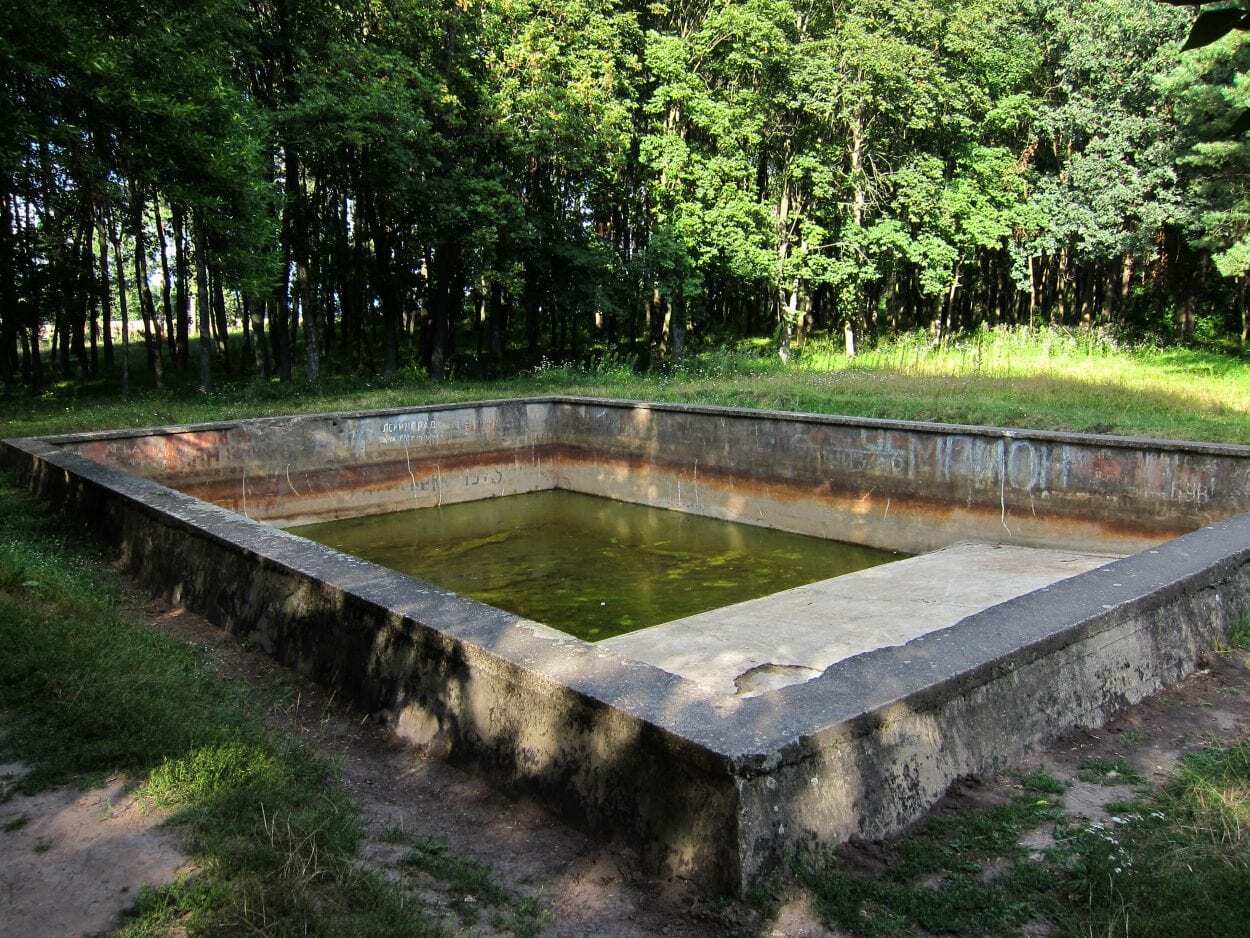Führerhauptquartier Werwolf was the codename for a bunker complex built during WW2 as a military headquarters for Adolf Hitler and his generals to monitor the eastern front.
Werwolf, derived from Werwolf or Wehrwolf in German (which can be translated as “werewolf”) is located deep in a pine forest, 12 km north of the city of Vinnytsia in Ukraine.
The complex was constructed by the Organisation Todt, a civil and military engineering organisation that was responsible for a huge range of engineering projects both in Nazi Germany and in occupied territories.
Organisation Todt became notorious for using forced labour and built Werworf between December 1941 and June 1942 using Soviet prisoners of war and local civilians (many of whom were executed and buried in a mass grave after construction was finished).
Hitler’s accommodation consisted of a simple log cabin with a private courtyard and personal bunker. The larger complex contained 20 wooden cottages, various barracks and bunkers (which some historians claim to go as deep as seven floors) that were surrounded with defensive positions connected by underground tunnels.
The wider perimeter also had a series of defensive bunkers, anti-tank ditches, anti-aircraft guns and minefields. Uncharacteristically of a military complex, Werwolf seemed more like a holiday resort, with the luxuries of a swimming pool (built for Hitler), cinema, gymnasium, conference rooms, sauna, bathhouse, barbershop, and even a tearoom.

During the Eastern campaign, Hitler mainly conducted operations from the Wolfsschanze, translated as “Wolf’s Lair” in the Masurian woods in present-day Poland and only stayed at Werwolf on three occasions with each visit lasting around a month.
With the advances of Soviet forces in the East on German positions, the Werwolf earned the nickname among officers as the “cursed bunker” and most of the complex was destroyed with explosives to prevent it falling into enemy hands.
The site was examined after the Nazi departure in March 1944 under the orders of Joseph Stalin for intelligence or documents and subsequently took steps to permanently seal the underground parts of the complex from the public and classified the site.
Header Image Credit : Eigenes Werk – CC BY-SA 3.0





